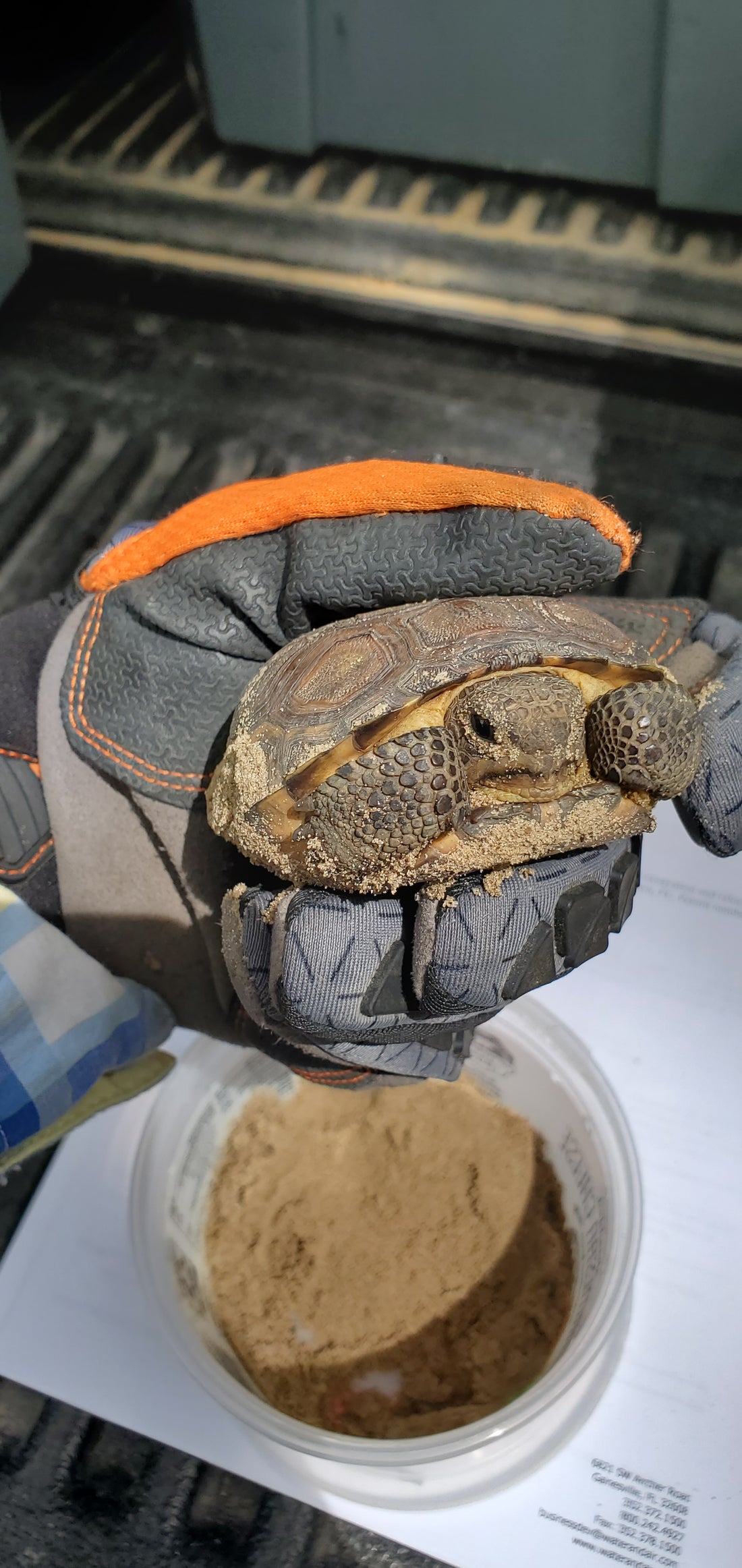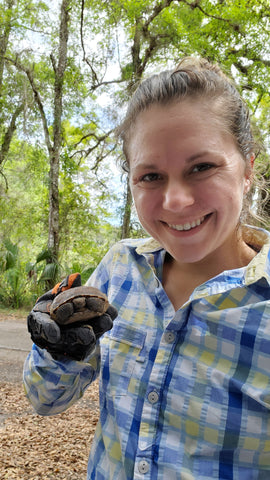
Gopher tortoise protection in Florida
Share
Introduction
The Gopher tortoise is a long-lived terrestrial tortoise who spends most of its life in the ground and plays a vital role in its ecosystem. In addition to their importance in their environment, it was recognized that they were facing a number of threats and needed protection.
It was in the late 70’s when these species were first listed as a Species of Special Concern in Florida. They were then reclassified as a State-Threatened Species in 2007 by the Florida Fish and Wildlife Conservation Commission (FWC).
As a wildlife ecologist working in the environmental consulting business, I have had the honor of having a role in protecting this species in the state of Florida. I am here to talk about my experience, the process of protection, and how you can help!
About the Gopher Tortoise
The gopher tortoise spends up to 80% of its long life in its home under the ground. Their burrows are on average 6.5 ft deep and 15 ft long, but are known to reach 40 ft long and more than 10 ft deep! It is because of their impressive burrows that they play a crucial role in their ecosystem. The gopher tortoise is considered a keystone species because other species depend on their burrows for survival (some even exclusively). The burrows provide shelter and refuge for more than 350 species including invertebrates, snakes, lizards, mice, skunks, armadillos, and frogs.
Range/Habitat/Diet
They are found naturally in the southeastern United States, east of the Mississippi, due to their unique habitat requirements. Because they are a fossorial species (living underground), they depend on habitats with well-drained, sandy soils to dig their burrows in. Common habitats they can be found in are xeric hammocks, pine sandhills, scrubby and pine flatwoods, coastal dunes, and dry prairies. The typical diet of the gopher tortoise includes grasses, shrubby herbaceous species, and legumes. They are strict herbivores and rely on the present plants in their environment for their survival.
Threats
The main challenges these animals face is habitat loss and degradation due to land development efforts. In addition to obvious habitat loss due to development, wildfire suppression, road mortalities, disease transmission between populations, human predation, and more also threaten these species. At this point, I’m sure you are putting this all together in your head and thinking “No wonder these animals need protection”!
Gopher Tortoise Protection in Florida
It only makes sense to do the opposite of the threats described above to preserve these species, right? But of course, it’s never that easy… Developers will continue to develop. So what can we do to help?
The process
It is the responsibility of the land owner and the developer to first ensure that there are no threatened or endangered species inhabiting their land before developing and it is FWC’s responsibility to enforce that this process takes place. If the land is suitable and/or if there are suspicions or evidence of gopher tortoise activity on or within 25 feet of the proposed construction area, then the land owner or developer is required to hire an authorized gopher tortoise agent to perform an initial gopher tortoise survey to prove that there are or aren’t gopher tortoises.
An authorized agent will come onto the property and will walk the whole property looking for "potentially occupied" or active burrows.
Once the survey is complete, if there are gopher tortoises or their burrows present, then the agent will recommend relocating the animals to a recipient site or somewhere on the property that is out of harms way. A recipient site is a private or public owned land that is permitted to accept gopher tortoises where there are no threats of development. But in order to relocate these animals, the owner or developer must go through the FWC permitting process. Once the permit is accepted, the excavation process can begin and there are several ways to go about it depending on the situation: bucket-trapping, hand shovel excavation, and supervised excavation using a backhoe. If a tortoise is retrieved during excavation, it can then be moved to its new home where it can live out its days in peace.
How you can help
Although you aren't allowed to handle these animals, FWC allows for you to move a tortoise out of harms way and in the direction it was heading if you see one in the middle of the road. The best way you can help these creatures is by staying informed and educating your friends and family about these animals, their role in their ecosystem, and how to protect them.


This juvenile gopher tortoise was captured from its burrow using a hand shovel due to its small size. This tortoise was likely two seasons old.

This is a species commonly found finding refuge in gopher tortoise burrows, the gopher frog.

This is an image of a excavation of a large burrow using a backhoe. A pvc pipe is placed in the burrow and follows the tunnel down, indicating the direction of the burrow. The burrow is dug up one careful scoop of dirt at a time until we reach the bottom, which is where the tortoise usually is captured.

This is an image of an active burrow entrance. A burrow is typically deemed active if there is an area of fresh white sand surrounding the entrance, also called an "apron", the shape of the hole is crescent-shaped, and there is no impeding vegetation or spider webs blocking the entrance.
